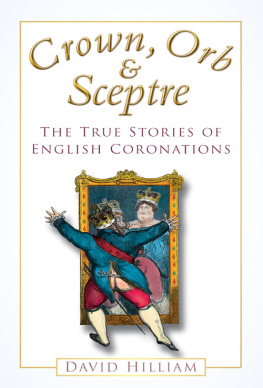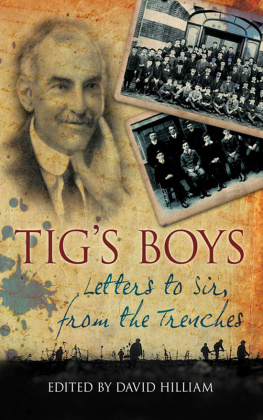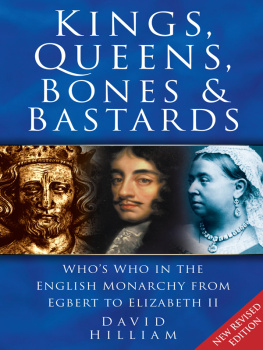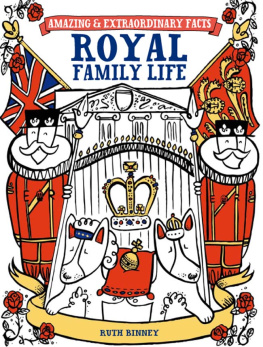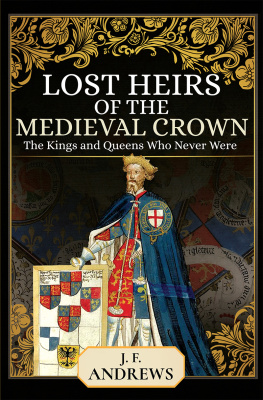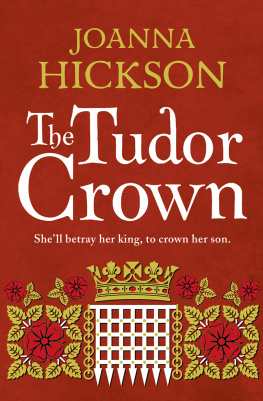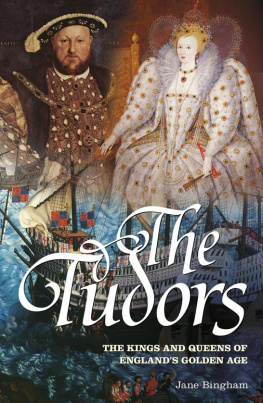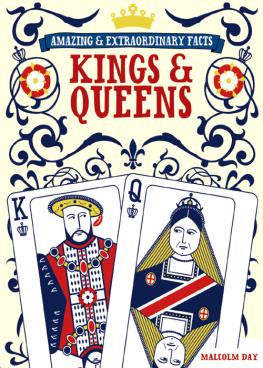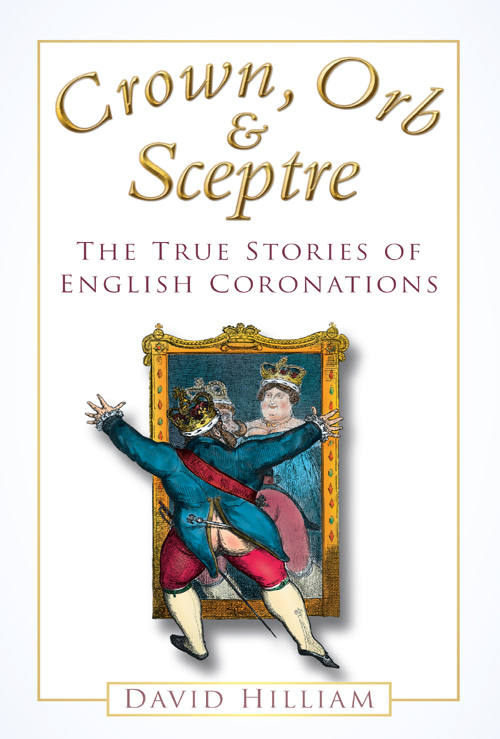CROWN, ORB
& SCEPTRE
CROWN, ORB
& SCEPTRE
T HE T RUE S TORIES OF
E NGLISH C ORONATIONS
D AVID H ILLIAM

First published 2001
Paperback edition first published 2002
This edition first published 2009
The History Press
The Mill, Brimscombe Port
Stroud, Gloucestershire, GL 5 2 QG
www.thehistorypress.co.uk
This ebook edition first published in 2011
All rights reserved
David Hilliam, 2001, 2002, 2009, 2011
The right of David Hilliam, to be identified as the Author of this work has been asserted in accordance with the Copyrights, Designs and Patents Act 1988.
This ebook is copyright material and must not be copied, reproduced, transferred, distributed, leased, licensed or publicly performed or used in any way except as specifically permitted in writing by the publishers, as allowed under the terms and conditions under which it was purchased or as strictly permitted by applicable copyright law. Any unauthorised distribution or use of this text may be a direct infringement of the authors and publishers rights, and those responsible may be liable in law accordingly.
EPUB ISBN 978 0 7524 7079 5
MOBI ISBN 978 0 7524 7080 1
Original typesetting by The History Press
Contents
Preface
This book covers a thousand years of English coronations. It describes the ceremonial occasions when kings and queens have been anointed, crowned, enthroned and thereby become entitled to loyalty and obedience.
Traditionally, the accession of a new monarch is announced with stark and brutal simplicity The King is dead! Long live the King! the essential feature about this being that everyone knows without a shred of doubt who the next monarch will be.
No need for lengthy election campaigns; no frantic jostlings for position; no power vacuums; no fuss. Seamlessly, power passes to the next in line. Accessions simply happen. Coronations follow, often after months of elaborate preparation.
Of course, there have been moments of high drama, when usurpers have seized power, or when an unexpected crisis has occurred; but whatever the circumstances, every new monarch needs to be crowned.
And every crowning is unique. With the arrival of a new monarch, there is an inevitable sense of newness, curiosity and hope. There is always an indefinable shift of mood throughout the nation as a new reign begins.
Coronations of Saxon kings took place in various holy places, but since 1066, the year of three kings, all English kings and queens have been crowned at Westminster Abbey. Only two kings were never crowned: Edward V who disappeared, probably murdered in the Tower of London; and Edward VIII who abdicated.
Here is an attempt to recapture something of the spirit of all those coronations from the time when Archbishop Dunstan crowned Edgar in Bath Abbey in the year 973, to that memorable occasion nearly ten centuries years later, when millions of people witnessed the televised coronation of Elizabeth II on 2 June 1953.
1
Coronations Before the Conquest
T HE H ERMIT -W IZARD F ROM G LASTONBURY AND A R UNAWAY H ORSE
We owe the English coronation service to one of the most colourful characters of the early Middle Ages the great tenthcentury archbishop and adviser to Saxon kings, Saint Dunstan. He was born in AD 909, just ten years after the death of King Alfred. It is likely that Dunstan himself was a minor member of the Saxon royal family, growing up in the court of Alfreds grandson, King Athelstan, at Glastonbury. This was at a time well before London was considered to be the capital of the country, and more than a century before Westminster Abbey was even begun.
As a teenager, young Dunstan was given a good education by the monks at Glastonbury, and he seems to have had an enquiring mind and many artistic talents; in fact he gained the reputation of being something of an eccentric among his contemporaries. He loved painting, embroidery, music, and he enjoyed reading whatever books he could find on poetry, legends and all sorts of out-of-the-way subjects. Added to this, he had strange dreams and visions that he enjoyed describing in great detail.
Eventually, his rather oddball lifestyle seems to have irritated his more normal hunting-and-fighting companions so much that they conspired to get rid of him, and they complained to Athelstan that Dunstan was a wizard! His enemies became so insistent that eventually Athelstan gave way to them and banished young Dunstan from his court on the charge of practising witchcraft and unlawful arts. The story goes that as he left he was pursued by the mob, who rolled him in mud, kicked him and beat him up.
For a while, Dunstan became a hermit, quietly practising his music, reading, and specialising in metal-working. He built himself a tiny cell, only 5 ft long and 2 ft wide, where he would pray and enjoy his heavenly visions. A famous incident is said to have happened one day, as he was working at his forge he was visited by the devil, who tried to tempt him by making lewd conversations about sexual pleasures with women. Dunstan was so horrified that he heated his pincers until they were red hot and then suddenly grabbed the devils nose with them so that the evil one ran off screaming with pain. In Christian art, Dunstan is often depicted holding those pincers, and he is still regarded as the patron saint of goldsmiths, jewellers and locksmiths.
When Athelstan died, Dunstan was brought back to court by the new king, Edmund, but soon the old rumours about witchcraft began to circulate again, so that Dunstan was banned for a second time. He was so upset by this that he decided to go abroad and live in Germany. He was just preparing to leave the country, when an incident occurred at Cheddar Gorge, in Somerset, that was to change his luck dramatically and, more importantly, the repercussions of this incident would change the course of English history.
One day, King Edmund was hunting at the top of the cliffs at Cheddar Gorge. As anyone knows who has been there, Cheddar is famous not only for its cheese but also for its deep, dangerous, rocky chasm, with steep vertical precipices on each side of a craggy valley. Today it is a popular tourist attraction, with its stalagmite caves and picturesque rockfaces. Edmund was chasing a deer when his horse began to gallop headlong and uncontrollably towards the brink of this chasm, and horse and rider seemed certain to plunge into the gorge beneath. Desperately, the king began to pray, vowing that he would redress the wrongs done to Dunstan if only his life were to be spared, and that he would for ever after hold Dunstan in great honour. Miraculously, the horse managed to save itself and Edmund survived; and thanks to this dramatic episode Dunstan was immediately appointed to be Abbot of Glastonbury the first rung on a ladder of success which later enabled him to become, in succession, Bishop of Worcester, Bishop of London and Archbishop of Canterbury.
Edmund reigned for only seven years before being stabbed to death by an outlawed thief. His brother, King Edred, who succeeded him, reigned for only nine years, fighting off the Danish armies of Eric Bloodaxe before his own premature death at about thirty-two. Edred was followed on the throne by a silly and incompetent fifteen-year-old, King Edwy, who was to last only about four years before he too was murdered.
It was at Edwys crowning ceremony, which took place at Kingston upon Thames in AD 955, that Dunstan still Abbot of Glastonbury was involved in one of the most notoriously embarrassing incidents ever to take place at an English coronation. Young Edwy, nephew of his predecessor King Edred, obviously felt that as king he could do just as he liked, and at his coronation feast he abruptly left the royal banquet to have sex in a nearby room with a lady friend and her daughter. When the nobles and Archbishop Odo of Canterbury realised just what was happening, they were suitably scandalised, and deputed Dunstan and the Bishop of Lichfield to go and fetch the newly-crowned king back to table. A medieval chronicler describes with ill-concealed glee how, when Dunstan and the bishop entered, they found Edwy repeatedly wallowing between the two of them in evil fashion, as if in a vile sty. Apparently, the royal crown, bound with wondrous metal, gold and silver and gems, had been carelessly thrown down on to the floor. Dunstan is said to have thrust this crown back on the lustful teenagers head and to have literally dragged him back to the coronation banquet, giving him a sound telling off as he did so. Naturally enough, King Edwy was not exactly pleased by this, and Dunstan found it necessary to retire abroad to Flanders for the rest of Edwys reign. However, this exile in Ghent was to prove immensely important for the future history of Christianity in England, for it was here that Dunstan encountered at first hand the Benedictine monastic way of life. It seized his imagination, and he was determined to introduce it to monasteries in England if ever he were to return.

